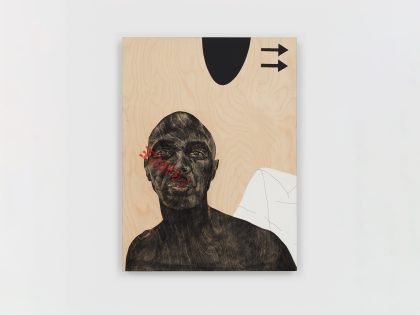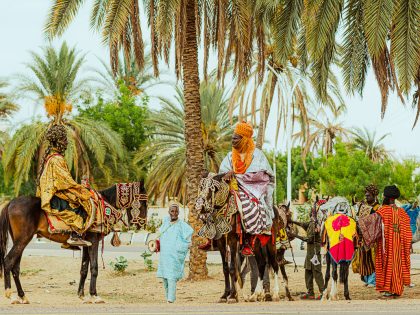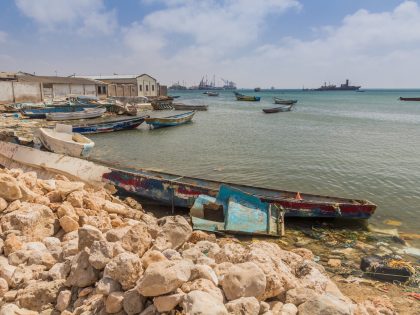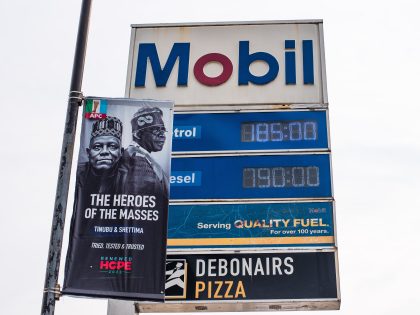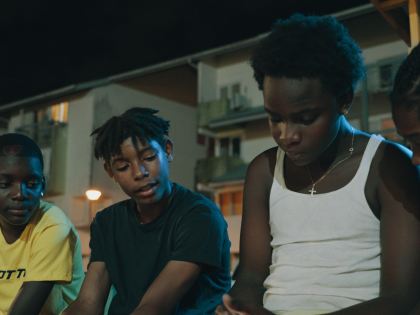Edward Echwalu’s Favorite Photographs
The Ugandan photographer: "It gets even more complicated being a photojournalist in Africa feeding foreign channels with African events."

Ugandan photographer Edward Echwalu responds to our request in an email: “To select FIVE images in a career of about 7 years is not easy. It was probably the most challenging editorial decision I have ever come across.” I took it as a gentle reminder we might be asking photographers the impossible in our “favorite photographs” series. That said, and after many tough choices by previous photographers, the results so far have always been revealing. Here are Edward Echwalu’s 5 favorite photographs, and some words on how they came into being (Tom Devriendt):
The one thing I have learnt to love and hate about news photography, in other words, photojournalism from my personal experience is that we are quick to move on to the next “hot” item, forgetting some of the important events that have occurred. Photojournalism throughout generations has always been largely about the negatives in our localities. It’s always been about “Man bites dog” rather than the “dog bites man”.
Weird.Strange.Shocking.Insane events in your community or town sell much more than the positive. And these are the kinds of issues a photojournalist is bound to interact with day on a nearly daily basis. While it’s every photographer’s dream to have their photos featured in some of the world’s leading agencies, it comes at a cost over time, inform of post-traumatic stress. Too much of the negatives deny photojournalists a chance to live what I would call a normal life because all they have had contact with over years is the negatives.
It gets even more complicated being a photojournalist in Africa feeding foreign channels with African events. I’ve had it difficult pitching positive stories out of this beautiful continent. Nonetheless, I’ve always tried to balance both colour and grief in my career as a photojournalist.
To my first selection. The picture above rips through my heart. This picture makes me appreciate how precious life is. It makes me look down on every law enforcing individual in my country. It drives me nuts. Kampala, the capital city of Uganda, was already engulfed in chaos for about a month. The populace were protesting the high fuel and food prices that were making life unbearable. The traders, especially importers were also protesting the weakening shilling against the dollar. They were making lump-sum losses on their imports, largely from China.
So how did they do this? As a way of putting pressure on the government to act, the opposition played as the figure heads in encouraging Ugandans to leave cars behind and “WALK TO WORK” every Tuesdays and Thursdays. Largely peaceful at first, it turned chaotic four weeks later. On this particular day, this young trader was shot in my face. He held nothing. Not a stone, not a stick, and most definitely, not a gun. All he held was his voice. And that proved too dangerous for the gun wielding soldier who shot him twice in the stomach. A minute earlier he was full of life, fighting a genuine fight-a right. The next minute, he was gone. Gone for good.
Here, in the next photo, is Nancy Abwot. A young 23-old girl mother of one from Gulu, a district 350km north of Kampala. Nancy’s story is a hard one to take in. She was abducted by Joseph Kony’s Lords Resistance Army (LRA) at a very tender age of seven. In parts she narrated how “after being abducted I was assigned to Dominique Ogwen (wanted by the International Criminal Court) as a housewife. It was so painful. I felt as if they should have just killed me other than giving me to a man that old at a time when I didn’t have an idea who a man was.
When she could not bear any more pain, she chose to escape. It was futile as she was arrested and tortured before being given two choices. Be shot and killed or have her lips cut off. Imagine yourself in her shoes. For such a narration, I needed a powerful portrait to sum up her feelings. Her white eyes hardly blinked choosing to look one direction at a time.
The African men have for long been blamed for not being by their wives, especially with regards to child delivery. Fair enough, it’s a rare scenario to have a complete involvement of the man. I have carried out a lot of commissioned work for a number of global health institutions in the East African region and so I have quite a clear picture of what a typical African delivery ward feels and looks like. Men are rare. The photo below was a unique case. And it happened quite randomly too. It was at about 10:00am at a health centre in Kamwenge, a district located 350km west of Kampala. I needed to take advantage of the soft early morning light to capture pregnant women coming for antenatal care. When the sun became harsh, I started packing my gear until I saw this frame:
 The man was escorting his pregnant wife back to the ward from a short call while holding her drip. She was frail, in pain and could barely make the next step. His facial expression was bold and full of empathy. It was indeed a rare gesture from a man, in a rural health facility.
The man was escorting his pregnant wife back to the ward from a short call while holding her drip. She was frail, in pain and could barely make the next step. His facial expression was bold and full of empathy. It was indeed a rare gesture from a man, in a rural health facility.
What’s the furthest you can go to protect your loved ones when they are clearly a danger to themselves? Tie them to a tree? The story of Nancy Lamwaka, a 13-year-old girl suffering from the “Nodding Disease” should challenge you to think deeper about what you could possibly do. Nodding disease does not have a cure. It attacks children under the age of 15. It makes children repel food. Children become semi-paralysed and can touch fire, cut themselves with ease, can drown without knowing. In all, they become semi-gods. Nancy has burnt herself a number of times, nearly drowned and is not showing any signs of improving. As such, painful as you might imagine, the father decided to keep tying her to a tree trunk every day spending up to 13 hours on a rope.
“It hurts me so much to tie my own daughter on a tree because in our tradition, it’s a taboo and unheard of. But because I want to save her life, I am forced to. I don’t want her to go loose and die in a fire, or walk and get lost in the bushes, or even drown in the nearby swamps,” her father, Michael Odongkara, sums it.
I have carefully chosen to end with something positive. Something that in genuinity, helps better explains the African life. From my experience, Africans are some of the happiest people in the world. And if you have travelled across this continent, you would testify to this. I took this beautiful woman in Lira, a town in Uganda located some 343 Km north of Kampala. I was initially more interested in the pot she was carrying. Pots are widely used in rural Ugandan households to store clean drinking water and for cooking. It’s made out of clay.
It was just another click that recorded a frame full of positive energy. And coming from a region which had suffered over 20-years of Joseph Kony’ LRA war, such is a sign of hope and post-conflict recovery.
- More on Edward Echwalu’s work can be found on his blog “Echwalu Photography” and on Facebook here. You can also follow “Echwalu Photography” on Twitter: @echwalu. Interviewed by Tom Devriendt.

















